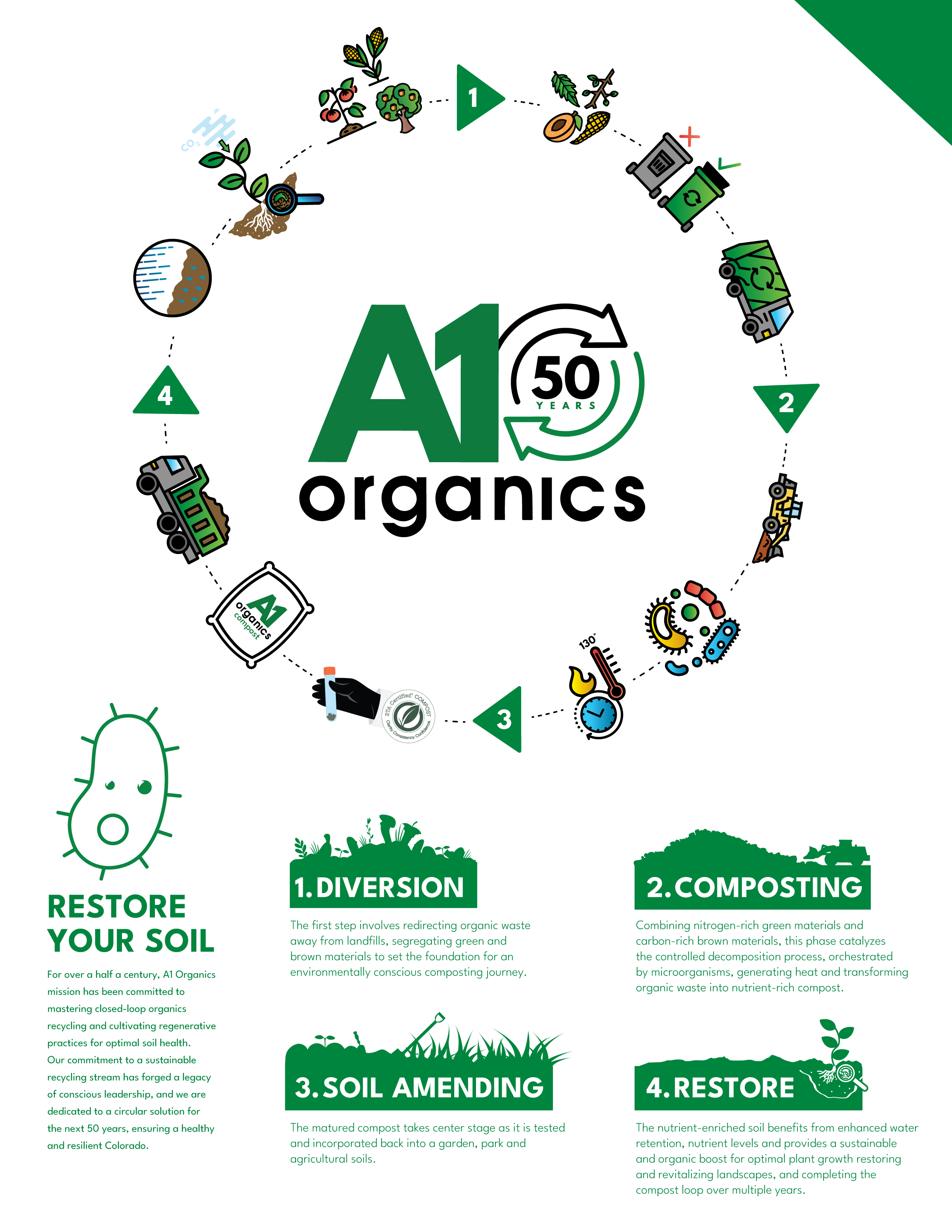Closing the Compost Loop

Everything starts with the collection of expired or excess organics, “natural resources”, in the blend of green (nitrogen-rich) and brown (carbon-rich) materials. Green materials include kitchen scraps, spent grains and lawn clippings while brown materials consist of items like dry leaves, straw, or wood.
Redirecting the correct clean organics away from landfills is one of the most critical steps in the composting journey and reduces methane emissions which contribute to more emissions than any other material in the landfill.
The clean organics are transported to an A1 facility for inspection and preprocessing.
A successful compost pile requires the right balance of carbon, nitrogen, oxygen, and water to ensure that microorganisms have the necessary ingredients and environment for efficient decomposition. Microorganisms, including bacteria and fungi, play a crucial role in breaking down organic matter forming a multi beneficial soil amendment.
As the microorganisms consume the materials, they generate heat, raising the temperature inside the compost pile. This heat is beneficial for speeding up the decomposition process and killing weed seeds and pathogens creating a safe for use product.
After the microbes have done their job, the compost must be hydrated and aerated thoroughly before lab testing can occur. Did you know A1 overnight ships soil samples from every batch of compost in coolers to get optimal test results?
When the compost heaps have cured, the nutrient rich product is loaded into bags or shipped in bulk for convenient use by end users.
This premium soil amendment is used across Colorado in agriculture, horticulture, and landscaping. Did you know A1 can supply 1 cubic yard or 5000 cubic yards for your commercial farm, city park, or home garden?
Soils with higher levels of organic matter materials retain water like a sponge allowing roots to tap into water reserves even during a drought.
Healthier soils have a direct correlation with healthy roots and plant growth aiding in photosynthesis and thereby sequestering more C02 out of the atmosphere and placing it back into the soil for future use.
Compost serves as a sustainable and organic soil amendment “fertilizer” reducing the need for synthetic chemicals and producing even healthier foods. Also, continued benefits increase over years instead of needing to reapply synthetic year after year and potential causing a negative impact on the water storage sheds.
